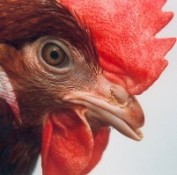Bird flu virus – a mass murderer

It is becoming better understood what it takes to turn ordinary bird flu virus into a mass murderer, according to medical sleuths looking into one of the deadliest killers in history, the 1918 flu.
This issue carries more than scientific significance, as new strains and versions flu viruses are appearing all the time. The deadliest, H5N1, has caused millions of birds to be culled, and killing nearly 400 people in more than 12 countries worldwide since 2003.
“The big question is, ‘What does H5N1 need to spread globally?’ We don’t know anything about that,” says Terrence Tumpey of the Centers for Disease Control and Prevention, who pioneered the research and took part in two new studies. “We don’t even know what seasonal flu needs to spread.”
According to James Paulson, a molecular biologist, answering such questions will help us recognise the next virus capable of causing a global pandemic. “There’s a new worldwide effort to survey (influenza) viruses in birds,” Paulson says, “but the tools we have are limited. We don’t know enough to assess what it takes to make a pandemic virus. What made the 1918 virus so special was that it could enter the human population and, within a few years, kill 50 million people?”
1918 flu resurrected – victim’s genes used
Two years ago, Tumpey led a team of researchers who resurrected the 1918 virus using genes found in a victim.
By studying the virus’s 10 genes, one by one, researchers are uncovering clues to the traits that turned the virus into a monster capable of killing so many millions worldwide, says Tumpey.
In one study, led by Ram Sasisekharan of the Massachusetts Institute of Technology, Tumpey, together with other researchers, provide a more detailed picture of how two mutations allowed the virus to nest in cells in the upper respiratory tract. It was discovered that the mutations enabled the virus to fix itself firmly to umbrella-shaped receptors in the respiratory tract. A natural variant of the 1918 virus, called NY18, did not have the same docking power or spread as readily in animal tests, Sasisekharan reported.
Three genes are key
Additionally, Claudia Pappas and a team of researchers, including Tumpey, identified three genes that appear to be key to the 1918 virus’s virulence. The researchers swapped multiple genes from the reconstructed virus with genes in seasonal strains of flu. They found three that appeared to boost flu’s ability to multiply in human airway cells and in mice.
Paulson says that armed with such information, researchers will be able to study a virus taken from someone in, say, Indonesia, and see whether it can explode worldwide.
“So far that hasn’t happened,” he says. “That we can be grateful for.”
Source: USA TODAY













